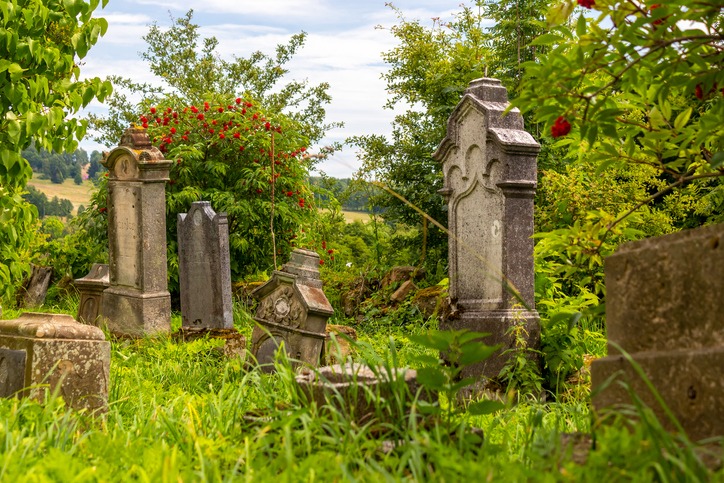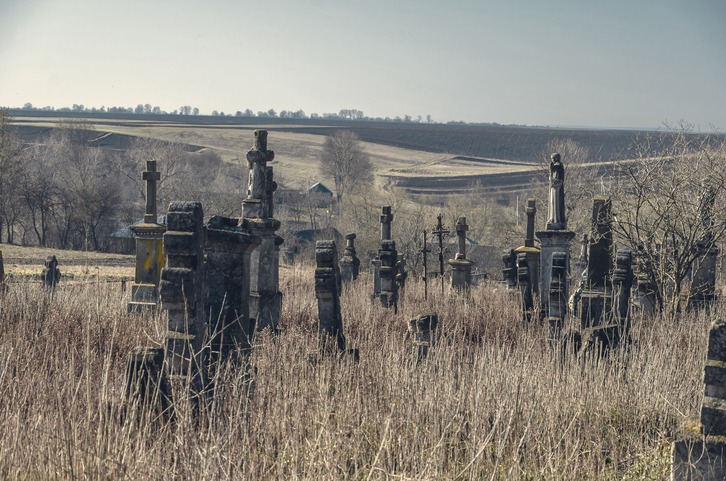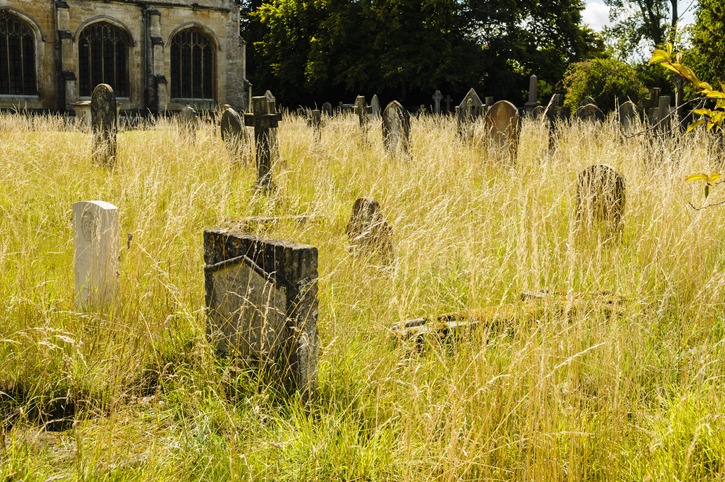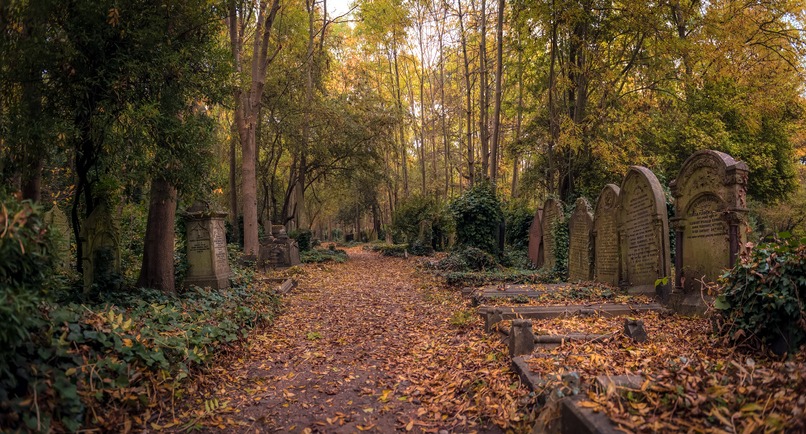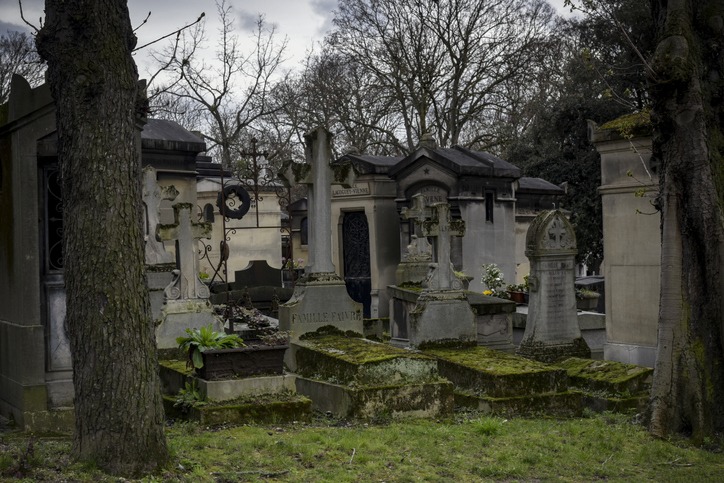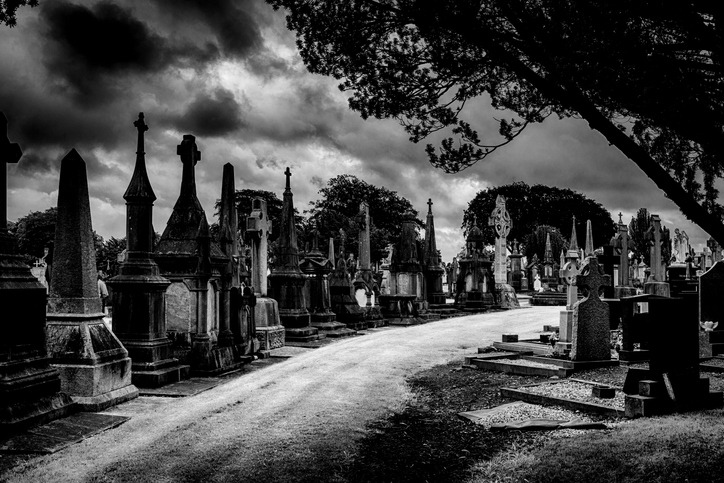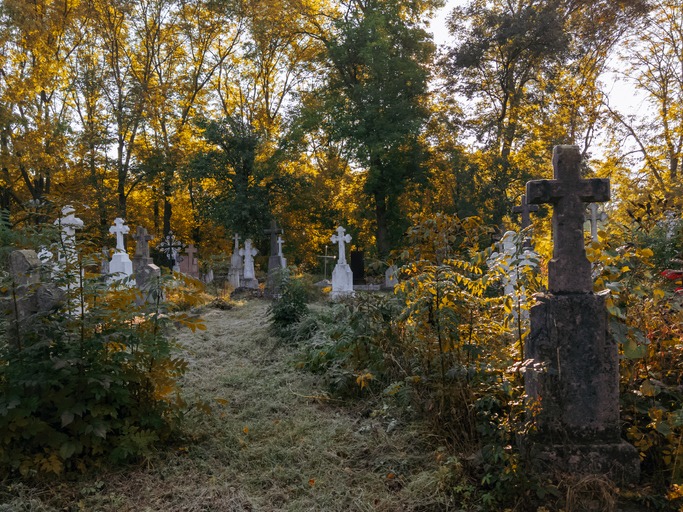Have you ever wandered past an old, overgrown cemetery and felt a shiver of curiosity? There’s something undeniably mysterious and captivating about abandoned cemeteries. These silent, solemn grounds, once bustling with mourners and memories, now lie forgotten, their stories buried under layers of time and nature. But what really happens to these neglected graveyards?
Today, we’re going to delve into the fascinating world of forgotten and abandoned cemeteries. We’ll uncover their hidden histories, explore why they’ve been left to the embrace of the wild, and discover the tales and legends they’ve inspired. From eerie, vine-entangled headstones to ghostly legends that linger like morning mist, these cemeteries are time capsules waiting to be explored.
So, if you’re as intrigued by these solemn sanctuaries of the past as we are, join us on this journey to unveil the mysteries of these hauntingly beautiful places. Let’s turn the pages of history together and see what secrets these resting places of souls long gone have to share.
The History and Significance of Cemeteries
The concept of dedicated burial grounds dates back thousands of years. In ancient times, burials often took place in family plots or churchyards. However, as populations grew and urban areas expanded, these spaces became insufficient. The 19th century saw the birth of the modern cemetery as we know it – landscaped parks outside city limits, designed not just for burials but also as places for the living to visit and reflect. These ‘garden cemeteries’ were serene, beautiful places, often featuring elaborate tombstones and memorials.
Cultural Reflections
Cemeteries have always been a reflection of the societies that created them. From the grand pyramids of Egypt, reserved for pharaohs and dignitaries, to the simple, unmarked graves of the common folk in early American settlements, burial practices, and cemetery designs speak volumes about social structures, religious beliefs, and attitudes towards death. In many cultures, cemeteries are seen as sacred spaces, connecting the living with their ancestors and the spiritual world.
A Space for Mourning and Celebration
Throughout history, cemeteries have been places not only for mourning but also for celebrating life. They remind us of the fleeting nature of existence and encourage reflection on how we choose to live our lives. In many cultures, cemeteries are the focus of rituals and celebrations, like Mexico’s Day of the Dead, where families gather to remember and honor their deceased loved ones.
Environmental Havens
Interestingly, as urban areas expand and natural habitats decrease, many old cemeteries have become unexpected sanctuaries for wildlife. Their often undisturbed and overgrown areas offer a haven for a variety of flora and fauna, turning these spaces into urban biodiversity hotspots.
In essence, cemeteries are not just places of rest for the departed; they are rich tapestries woven with threads of history, culture, and nature. As we explore the phenomenon of abandoned cemeteries, it’s important to recognize and honor these multifaceted roles they’ve played throughout human history. They stand as silent yet eloquent witnesses to the passage of time and the ever-changing world around us.
Reasons for Abandonment
As we delve into the world of abandoned cemeteries, a key question arises: why do these sacred spaces fall into neglect? The abandonment of cemeteries is a complex issue, often rooted in various social, economic, and environmental factors. Let’s explore some of the primary reasons behind this phenomenon.
- Urban Development and Population Shifts: One of the most common reasons for cemetery abandonment is urban development. As cities expand, land becomes a premium commodity. Sometimes, cemeteries in prime locations are relocated to make way for urban growth, leaving the original sites neglected. Additionally, population shifts play a role. As people move away from rural areas to cities, small local cemeteries lose their communities, and with no one left to care for them, they fall into disuse.
- Economic Constraints: Maintaining a cemetery requires resources. Many older cemeteries run out of space, meaning no new burials and, consequently, no more income from burial fees. Without a steady flow of funds, the upkeep of these cemeteries becomes financially unsustainable, leading to gradual neglect.
- Natural Disasters: In some cases, natural disasters like floods, earthquakes, or landslides can render cemeteries inaccessible or cause significant damage, making them difficult or impossible to maintain. Over time, these affected areas can become forgotten.
- Social and Cultural Changes: Cultural attitudes towards death and burial practices also influence the fate of cemeteries. The rise in cremation rates, for instance, has reduced the demand for traditional burial plots. Moreover, as societal ties to ancestral burial grounds weaken, the commitment to maintaining these cemeteries diminishes.
- Legal and Administrative Challenges: Ownership disputes and unclear legal responsibilities can lead to cemeteries being abandoned. In some cases, the organizations or individuals responsible for their upkeep might no longer exist, and without clear legal custodians, these cemeteries fall through the cracks.
- Overlooked History: Smaller or historically marginalized cemeteries, like those for impoverished individuals, ethnic minorities, or institutional patients, often don’t receive the attention or funding needed for maintenance, leading to their abandonment.
The abandonment of cemeteries is a multifaceted issue that reflects broader societal trends and challenges. Understanding these reasons is crucial in addressing the preservation of these historical and cultural treasures. As we move through this exploration, it becomes evident that each abandoned cemetery has its own unique story intertwined with the narrative of human and urban development.
Abandoned Graveyards Around the World
Abandoned graveyards scattered across the globe each hold a unique mirror to the past, echoing stories of different eras, cultures, and communities. Let’s take a virtual journey to some of the world’s most intriguing and hauntingly beautiful abandoned cemeteries, uncovering the tales and histories that led them to their current state of solitude and neglect.
Highgate Cemetery, London, England
Highgate Cemetery in London, England, is not just a resting place for the dead but a cultural and historical landmark steeped in Victorian splendor and Gothic beauty. Opened in 1839, it’s part of the Magnificent Seven, a series of cemeteries created around London to alleviate overcrowding in parish burial grounds. Did you know that in the Victorian era, it was part of their etiquette to wear a mourning dress? Find out more about this in our article, What Can Victorian Mourning Dress Teach Us About the Fashion of Grief?
Highgate is the final resting place of numerous famous figures. The most visited grave is that of Karl Marx, whose monument in the East Cemetery attracts visitors from all over the world. Other notable burials include Douglas Adams, author of “The Hitchhiker’s Guide to the Galaxy,” and George Eliot (Mary Ann Cross), the renowned novelist.
Over the years, parts of Highgate Cemetery have become overgrown, creating a haven for wildlife and lending an ethereal, slightly eerie atmosphere to the grounds. The juxtaposition of beautiful, decaying monuments with the untamed beauty of nature adds a unique charm to the cemetery, making it a favorite among photographers, historians, and nature enthusiasts.
St. Louis Cemetery No. 1, New Orleans, USA
St. Louis Cemetery No. 1 in New Orleans, USA, is a site steeped in history and mystery, emblematic of the city’s unique cultural tapestry. Established in 1789, this famed resting place is known for its distinctive above-ground vaults, a necessity in a city where the water table is high and traditional burials are not feasible.
This cemetery holds the remains of notable figures, including Marie Laveau, the legendary Voodoo priestess whose tomb attracts thousands of visitors annually. Over the years, parts of the cemetery have suffered from neglect, vandalism, and the ravages of time and weather, lending an eerie atmosphere to its hallowed grounds. In recent years, efforts have been made to preserve this historical site, recognizing its significance as a part of New Orleans’ heritage and as a testament to the city’s resilience and diverse cultural legacy.
La Recoleta Cemetery, Buenos Aires, Argentina
La Recoleta Cemetery in Buenos Aires, Argentina, is a remarkable necropolis, famed not only for its residents but also for its extraordinary architecture and art. Established in 1822, it houses the graves of some of Argentina’s most prominent figures, including Eva Perón, presidents, and Nobel Prize winners. Its streets are lined with impressive mausoleums and statues, showcasing a range of architectural styles from Art Deco to Baroque.
Despite its prestige and beauty, some corners of La Recoleta have succumbed to the passage of time, with certain mausoleums showing signs of neglect and wear, adding a layer of poignant beauty to the cemetery.
Père Lachaise Cemetery, Paris, France
Père Lachaise Cemetery in Paris, France, is a site of immense historical and cultural significance, renowned as the final resting place for many illustrious figures like Oscar Wilde, Jim Morrison, and Édith Piaf. As one of the city’s most visited tourist attractions, it’s celebrated for its beautiful, artful mausoleums and picturesque, tree-lined pathways. However, amidst this reverence, some of its older sections tell a different story.
These areas, less frequented by tourists, bear a quiet, almost melancholic atmosphere, with time-worn gravestones and overgrown plots. The contrast in Père Lachaise between the well-trodden paths leading to famous graves and these quieter, neglected areas is striking. It serves as a poignant reminder of the ceaseless passage of time and how history, no matter how grand, can fade into obscurity. Despite this, even in its forgotten corners, Père Lachaise holds a haunting beauty, with each neglected tomb whispering tales of the past, waiting to be rediscovered and remembered. You may also read our post, How Has Nature Reclaimed These Abandoned Places? to discover more places being taken back by nature.
Glasnevin Cemetery, Dublin, Ireland
Glasnevin Cemetery in Dublin, Ireland, established in 1832, is a place rich in history and Irish cultural heritage. As the final resting place of over 1.5 million people, it encapsulates the story of Ireland itself, with graves of notable figures like Daniel O’Connell and Michael Collins. The cemetery is renowned for its magnificent Victorian architecture, sprawling landscapes, and ornately crafted monuments.
While it’s meticulously maintained and a site of significant national reverence, Glasnevin also has its quieter, less-visited areas. These sections, with their aging headstones and time-weathered memorials, evoke a sense of forgotten history and serene solitude. They stand in contrast to the busier parts of the cemetery, offering visitors a moment of reflection on the passage of time and the many untold stories of those who shaped Ireland’s past.
What Happens to Abandoned Cemeteries?
When cemeteries fall into abandonment, their fate can vary greatly, often dependent on a range of factors, including location, historical significance, and community involvement. These resting places of the past undergo a transformation, both physically and in their role within the community. Let’s explore what typically happens to these hallowed grounds when they are left to the whims of time and nature.
- Reclamation by Nature: One of the most common outcomes for abandoned cemeteries is their reclamation by nature. Overgrown with vegetation, they become places where the natural world intertwines with the remnants of human memory. Tombstones may become obscured by foliage, and pathways disappear under creeping vines, creating an atmosphere of haunting beauty and serene decay.
- Historic Preservation and Restoration Efforts: In some cases, abandoned cemeteries attract the attention of historical societies and preservation groups. These organizations, often powered by community volunteers and historians, work to restore and maintain these sites, recognizing their cultural and historical value. Restoration efforts can range from clearing overgrowth and repairing headstones to more extensive projects aimed at preserving the cemetery as a historical landmark.
- Transformation into Public Spaces: Some abandoned cemeteries are transformed into public parks or gardens. This transition often involves maintaining the integrity and respect of the burial site while providing a serene green space for the living. These cemeteries then begin a new chapter as places of contemplation and communal gathering, blending history with the vibrancy of present-day life.
- Forgotten and Lost to Time: Unfortunately, not all abandoned cemeteries receive a new lease on life. Some are forgotten and lost to time and memory, especially those in remote or rural areas. Without records or descendants to advocate for their upkeep, these cemeteries risk being completely consumed by the landscape or, worse, being developed over without recognition of the history they hold.
- Archaeological and Academic Interest: Abandoned cemeteries sometimes become sites of academic interest, offering archaeologists and historians a chance to study burial practices, genealogy, and local history. These explorations can uncover forgotten stories and provide valuable insights into the past.
- Impact on Local Lore and Tourism: In some cases, abandoned cemeteries gain a new kind of fame through local lore and ghost stories. They become destinations for those interested in the paranormal or in exploring the more macabre aspects of history. This type of tourism can bring attention to these sites, sometimes sparking interest in their preservation.
Conclusion
And there we have it, our journey through the silent, often forgotten world of abandoned cemeteries. Isn’t it incredible how these places, once bustling with mourners and memories, transform over time? From being reclaimed by nature’s relentless grasp to becoming subjects of historical preservation efforts, each cemetery has its own story to tell. Some find new life as tranquil parks, while others remain hidden, their tales and tombstones obscured by time and undergrowth.
So, next time you pass by one of these forgotten graveyards, maybe take a moment to ponder the lives of those who rest there. Who knows what secrets and stories you might uncover? And if you’re ever involved in preserving these historical treasures, remember, you’re not just taking care of a piece of land; you’re honoring a chapter of our shared human story.
